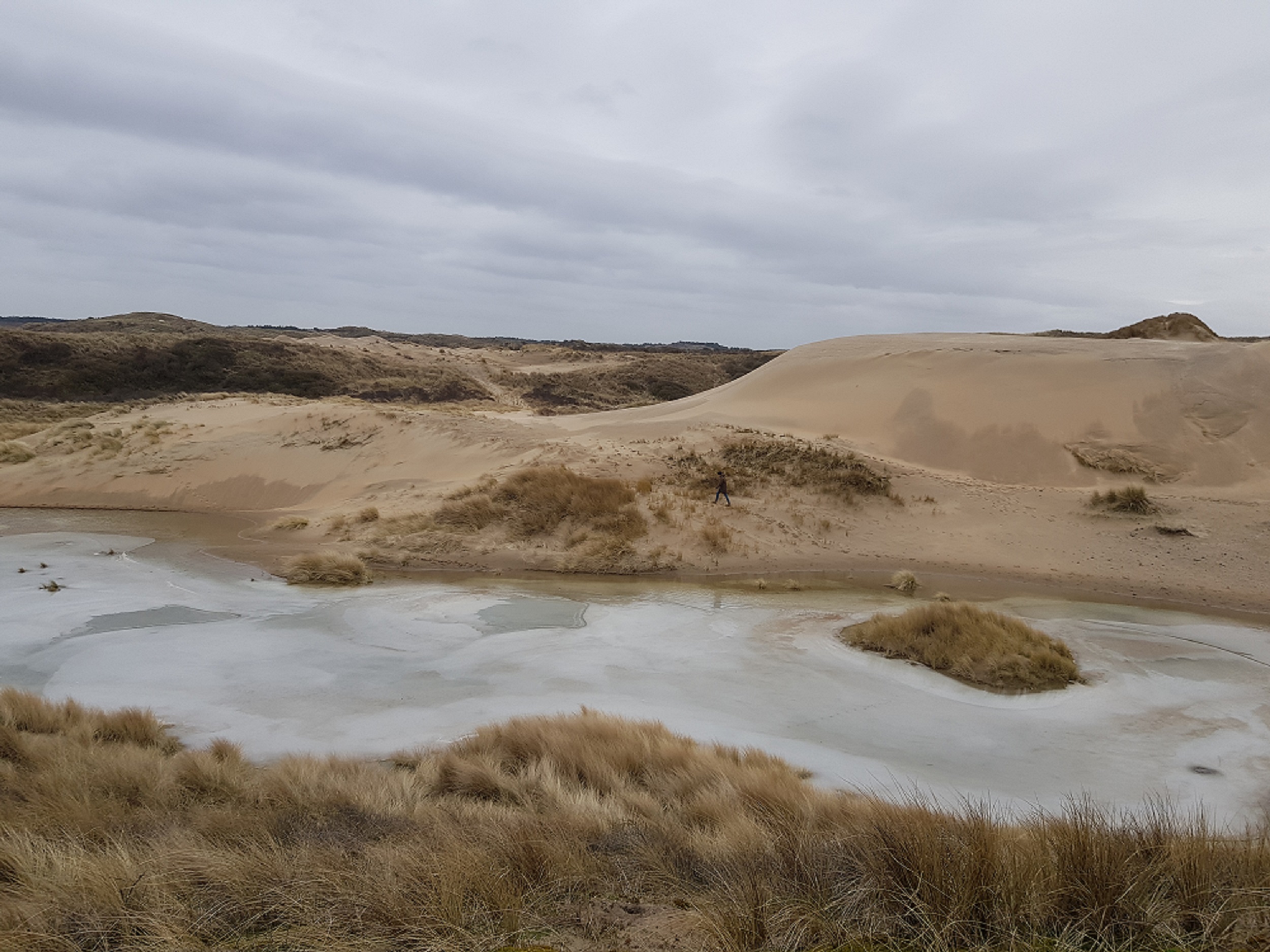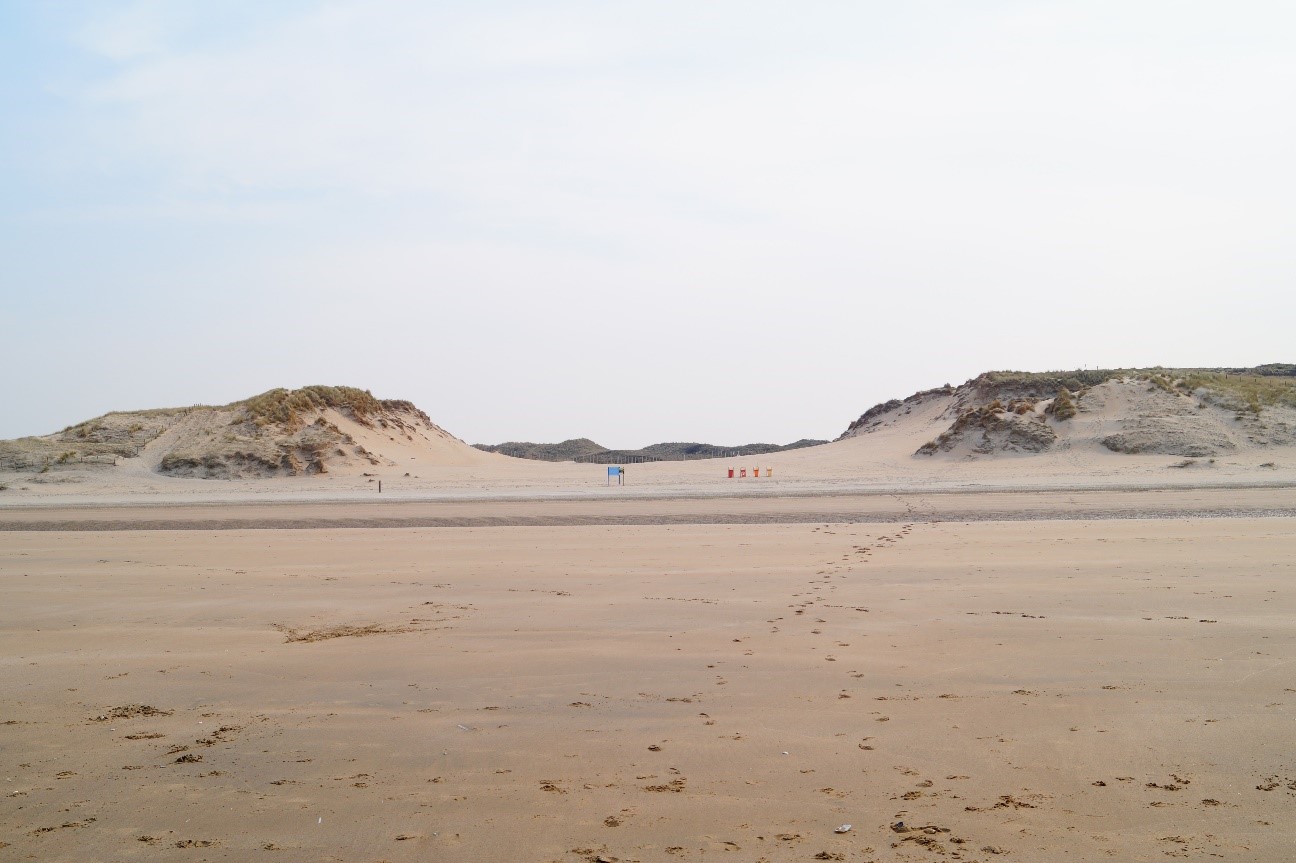Case Study
Dynamic Dune Restoration for climate change adaptation and nature conservation in the Netherlands
Contact name
Myrthe Fonck
Institution name
PWN
Region & country
The Netherlands, Noord-Holland
Summary
In the Netherlands, two coastal areas, Nationaal Park Zuid-Kennemerland and Noordhollands Duinreservaat, consist primarily of grey dune habitat. Instead of the traditional practice of fixing the dunes, Puur Water Natuur (PWN) changed the management to dynamic dune management, which had beneficial effects for climate change adaptation, biodiversity, and coastal defence.

Myrthe Fonck

North Western Notch from the beach side
Myrthe Fonck

Myrthe Fonck
Background of the project
At first, the dune management was done by fixing the dunes in one place, using vegetation. This was done as a way of coastal defence. Increased erosion required the regular addition of large quantities of sand. And because of the communicating vessels effect, when the sea level rises on one side of the dunes, so does the groundwater on the other side.
There was an increased social awareness of climate change issues, both inside the company, and at a national level. The effects of climate change became apparent when they started to record extreme dry summers in 2018 and 2019, and maxima in groundwater levels. In a practical sense, the current management that aims at fixing the dunes by planting vegetation was no longer sustainable. Increased erosion requires the regular addition of large quantities of sand.
Solution and actions taken
As a result of an experiment carried out as early as 2011 within the framework of the LIFE Dutch dune revival project, dynamic dune management was developed and subsequently adopted on a large scale.
The main action was to dig five notches next to each other in the first row of dunes. The goal was to allow fresh sand to enter the dune system beyond the first row under the action of the wind. This fresh sand supply is very valuable as it is rich in limestone and reduces the risk of soil acidification. In the first phase, regeneration of vegetation and a new cycle of plant succession was visible. In a second phase, the notches remained active and large white sand dunes were formed.
Other institutions or parties involved
PWN worked with Lake IJssel management team, and the Koninklijk Nederlands Meteorologisch Instituut (KNMI). The implementation of the climate change strategy was done through the LIFE “Dutch dune revival” project. Regarding the work done on dynamic systems, they have involved the water board and the national government, as they are responsible for coastal defence. They also involve recreational stakeholders and the neighbours—farmers, municipality, cycling path managers, et cetera.
Results
The dynamic of the system is brought back, making it more robust and connecting nature patches. Species will therefore be able to move along the area. The system becomes more resilient by improving the diversity of species and habitats, habitat connectivity, and the dynamics of natural processes. For a virtual tour that showcases the difference between the old and the current situation, click here!
Challenges
The main problems were, and still are, related to the infrastructure. Groundwater levels increase due to climate change and sea-level rise. The dynamic dune management system as well as the natural water management system can adapt to these rising levels and keep the water in the ecosystem. However, human infrastructures such as houses, fields, or cycling paths that lie close to the dune system will be affected. A seemingly apparent challenge was stakeholder involvement, however, in the end, this was overcome by timely involvement.
Lessons learned
At the beginning of the project, PWN was focused on conservation measures. Now they are more conscious of the necessity to also adapt the management approach and extend their conception of nature conservation. When managing an area, there are so many challenges and problems that the tendency is to deal with the current problems. However, climate change calls for a strategy in the long term. It pushes the manager to investigate the future.
Other resources
